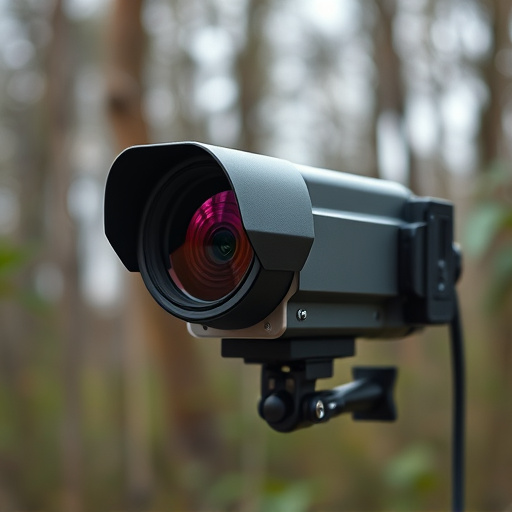Covert recording enhances home security but has legal limits. Place cameras in visible common areas while avoiding bedrooms and bathrooms. Identify hidden camera spots through physical inspections and tech tools. Utilize multi-layered defenses including regular inspections, advanced tech, and vigilance.
Uncover the art of identifying covert recording devices and fortify your home security. This comprehensive guide delves into the hidden world of secret cameras, offering insights on understanding their capabilities and navigating legal boundaries. Learn to spot potential hidden camera spots in your home using advanced techniques. Discover preventive measures and detection methods to ensure peace of mind, transforming your space into a secure sanctuary free from surveillance breaches.
- Understanding Covert Recording and Legal Considerations
- Identifying Potential Hidden Camera Spots in Your Home
- Advanced Techniques for Spotting Secret Cameras
- Enhancing Home Security: Preventing and Detecting Hidden Cameras
Understanding Covert Recording and Legal Considerations
Covert recording, also known as hidden camera surveillance, involves setting up devices to capture video or audio without the knowledge of individuals being recorded. While this method offers enhanced home security and peace of mind, it’s crucial to understand the legal implications associated with it. The use of hidden cameras in private residences is generally legal, but strict regulations govern their deployment. For instance, many regions mandate clear visual indications that a camera system is active, ensuring residents are aware they’re being recorded.
When considering best hidden camera locations for home security, it’s essential to select spots that offer optimal visibility without infringing on privacy rights. Common areas like entryways, living rooms, and kitchens are popular choices due to their high foot traffic. However, placing cameras in bedrooms or bathrooms raises legal red flags, as these areas generally expect a reasonable expectation of privacy. Always consult local laws and regulations regarding surveillance before installing any covert recording devices for optimal home security without legal repercussions.
Identifying Potential Hidden Camera Spots in Your Home
Identifying potential hidden camera spots in your home is a crucial step in enhancing your privacy and security. Start by examining areas that offer concealment and line of sight, such as corners, behind furniture, or in cabinets. Look for any unusual wiring or power adapters, which could be indicative of a covert recording device. Utilize a metal detector to scan through walls and ceilings, as hidden cameras often use metallic components.
Consider common best hidden camera locations like above doors, peepholes, or light fixtures. Don’t overlook less obvious areas like air vents, picture frames, or even indoor plants with built-in cameras. Regularly check for any new or unexplained devices, and be vigilant about granting access to your home. By staying proactive and utilizing these methods, you can ensure a higher level of home security against covert recording devices.
Advanced Techniques for Spotting Secret Cameras
In the pursuit of enhancing home security, mastering advanced techniques for spotting secret cameras is paramount. These methods go beyond basic visual inspections, employing technology and strategies to uncover even the most covert recording devices. One effective approach involves utilizing thermal imaging cameras, which can detect heat signatures from electronic components, revealing hidden cameras that might be disguised as everyday objects. Additionally, electromagnetic field (EMF) detectors can identify unusual electromagnetic emissions often associated with active surveillance equipment.
For optimal results, professionals recommend a multi-layered strategy. This includes physical checks for suspicious wiring or unusual installations, coupled with digital sweeps using specialized software capable of detecting hidden cameras’ infrared signatures. By combining these advanced techniques with thorough inspections, individuals and security experts can ensure that best hidden camera locations are identified and addressed, fortifying home security against potential breaches.
Enhancing Home Security: Preventing and Detecting Hidden Cameras
Enhancing home security against hidden cameras involves a combination of proactive measures and advanced detection techniques. Start by conducting a thorough inspection of your property, paying close attention to areas often overlooked, such as wall cracks, ceiling spaces, and behind appliances. Using specialized tools like metal detectors and infrared cameras can help identify potential hidden camera locations.
Implementing best practices for home security includes securing common spots where hidden cameras might be placed, like door frames, windowsills, and corridors. Regularly updating security systems with advanced features, such as motion sensors and facial recognition software, further strengthens your defense against covert recording devices. Stay vigilant and stay one step ahead by keeping an eye on any unusual activity or unfamiliar objects in your home.
Covert recording, while a concern for home security, can be proactively addressed. By understanding legal boundaries and employing advanced detection techniques, individuals can safeguard their privacy and enhance their homes’ security. Regular checks and staying informed about best hidden camera locations are key to preventing unwanted surveillance. Ultimately, being aware and prepared is the best defense against covert recording threats to your personal space and peace of mind.
